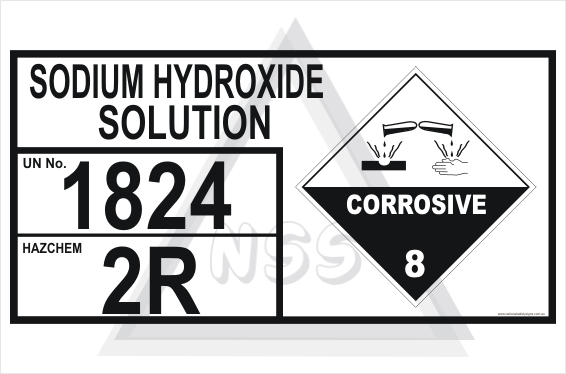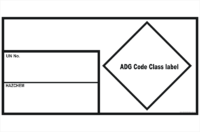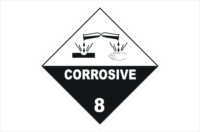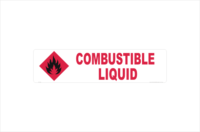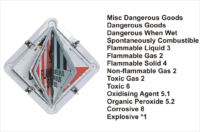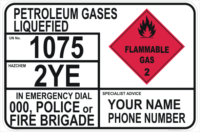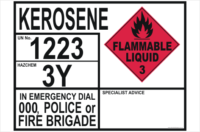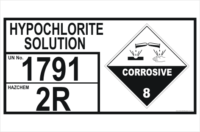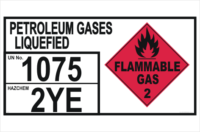Sodium Hydroxide Solution Storage Panel H15118
From: $23.60
Sodium Hydroxide Solution Storage Panel. Click on reflective if needed. Recommend you add protective laminate to your order for this sign.
Description
Sodium Hydroxide Solution Storage Panel
Especially Relevent to storing Sodium Hydroxide Solution is the Sodium Hydroxide Solution Storage Panel. In addition to the Metal or plastic EIP signs, we also sell these as a Vinyl Sticker.
Fast shipping
Order today and we’ll normally ship the Sodium Hydroxide Solution Storage Panel the next working day.
Here is some information on Sodium Hydroxide:
Sodium Hydroxide (NaOH), also known as caustic soda or lye, is a common inorganic compound that is typically used as a strong chemical base. It has a wide variety of uses such as making paper, drinking water, medicine and is even used in food preparation. It can be found in many household items such as drain cleaner, detergents, and bath soaps. While this chemical is widely used, its properties present special storage and handling challenges.
In its pure form, Sodium Hydroxide is a white solid that can be found in flakes, granules or pellets. It is generally used as a solid or a 50% solution. In liquid form, it is colorless and denser than water. It also becomes “slippery” and tends to find weak points in storage containers resulting in leaks.
In all forms, it is highly corrosive and reactive. As a solution, it will react with many metals including aluminum, magnesium, copper, and zinc. It also reacts readily with organic tissue such as human skin or eyes. Exposure to sodium hydroxide, even if only for a few seconds, can result in permanent eye damage and severe chemical burns. For this reason, it is critical to ensure it is handled and stored properly. Large amounts will need a Sodium Hydroxide Solution Storage Panel affixed to the storage vessel.
You can read more here: ( click here )
Tecnical bits
Heptahydrate, NaOH·7H
2O: from −28 °C (18.8%) to −24 °C (22.2%).[14]
Pentahydrate, NaOH·5H
2O: from −24 °C (22.2%) to −17.7 (24.8%).[14]
Tetrahydrate, NaOH·4H
2O, α form: from −17.7 (24.8%) to +5.4 °C (32.5%).[14][15]
Tetrahydrate, NaOH·4H
2O, β form: metastable.[14][15]
NaOH·3.5H
2O: from +5.4 °C (32.5%) to +15.38 °C (38.8%) and then to +5.0 °C (45.7%).[14][10]
Trihydrate, NaOH·3H
2O: metastable.[14]
Dihydrate, NaOH·2H
2O: from +5.0 °C (45.7%) to +12.3 °C (51%).[14][10]
Monohydrate, NaOH·H
2O: from +12.3 °C (51%) to 65.10 °C (69%) then to 62.63 °C (73.1%).[14][16]
Early reports refer to hydrates with n = 0.5 or n = 2/3, but later careful investigations failed to confirm their existence.[16]
The only hydrates with stable melting points are NaOH·H
2O (65.10 °C) and NaOH·3.5H
2O (15.38 °C). The other hydrates, except the metastable ones NaOH·3H
2O and NaOH·4H
2O (β) can be crystallized from solutions of the proper composition, as listed above. However, solutions of NaOH can be easily supercooled by many degrees, which allows the formation of hydrates (including the metastable ones) from solutions with different concentrations.[10][16]

